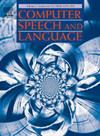A CBR-based conversational architecture for situational data management
IF 3.4
3区 计算机科学
Q2 COMPUTER SCIENCE, ARTIFICIAL INTELLIGENCE
引用次数: 0
Abstract
This paper introduces a conversational Case-Based Reasoning (CBR) architecture, aimed at improving situational data management by incorporating user feedback into the process. The core of the architecture is a “human-in-the-loop” approach implemented through a conversational agent, which facilitates interaction between the user and the system. The CBR-based approach leverages a historical knowledge base that is dynamically updated based on user feedback, allowing for a more responsive and adaptive system. This feedback plays a crucial role in the processes of case retrieval, review, and retention within the CBR cycle, enabling the system to evolve based on user interactions. An empirical study involving 22 participants was conducted to assess the impact of user feedback on system recommendations. This study included both static and dynamic test scenarios, focusing on aspects such as visibility, support, usefulness, and data integration. The results highlighted a general preference for recommendations that were influenced by user input, indicating the effectiveness of incorporating human feedback in the decision-making process. The research contributes to situational data management by illustrating how a conversational CBR framework, integrated with user feedback, can improve processes such as data integration and data discovery. In addition, it highlights the importance of user involvement in enhancing the functionality of conversational systems for complex data management, pointing to the potential for further development in this area.
用于情景数据管理的基于cbr的会话体系结构
本文介绍了一种会话式基于案例的推理(CBR)体系结构,旨在通过将用户反馈纳入流程来改进情景数据管理。该体系结构的核心是通过会话代理实现的“人在循环”方法,会话代理促进了用户和系统之间的交互。基于cbr的方法利用基于用户反馈动态更新的历史知识库,从而实现响应性和适应性更强的系统。这种反馈在案例检索、审查和CBR周期中的保留过程中起着至关重要的作用,使系统能够根据用户交互进行发展。本研究以22位参与者为研究对象,评估用户反馈对系统建议的影响。该研究包括静态和动态测试场景,重点关注诸如可见性、支持、有用性和数据集成等方面。结果突出表明,人们普遍倾向于受用户输入影响的建议,这表明在决策过程中纳入人的反馈是有效的。该研究通过说明会话式CBR框架如何与用户反馈相结合,改善数据集成和数据发现等过程,从而有助于情景数据管理。此外,它强调了用户参与加强复杂数据管理的对话系统功能的重要性,指出了在这一领域进一步发展的潜力。
本文章由计算机程序翻译,如有差异,请以英文原文为准。
求助全文
约1分钟内获得全文
求助全文
来源期刊

Computer Speech and Language
工程技术-计算机:人工智能
CiteScore
11.30
自引率
4.70%
发文量
80
审稿时长
22.9 weeks
期刊介绍:
Computer Speech & Language publishes reports of original research related to the recognition, understanding, production, coding and mining of speech and language.
The speech and language sciences have a long history, but it is only relatively recently that large-scale implementation of and experimentation with complex models of speech and language processing has become feasible. Such research is often carried out somewhat separately by practitioners of artificial intelligence, computer science, electronic engineering, information retrieval, linguistics, phonetics, or psychology.
 求助内容:
求助内容: 应助结果提醒方式:
应助结果提醒方式:


